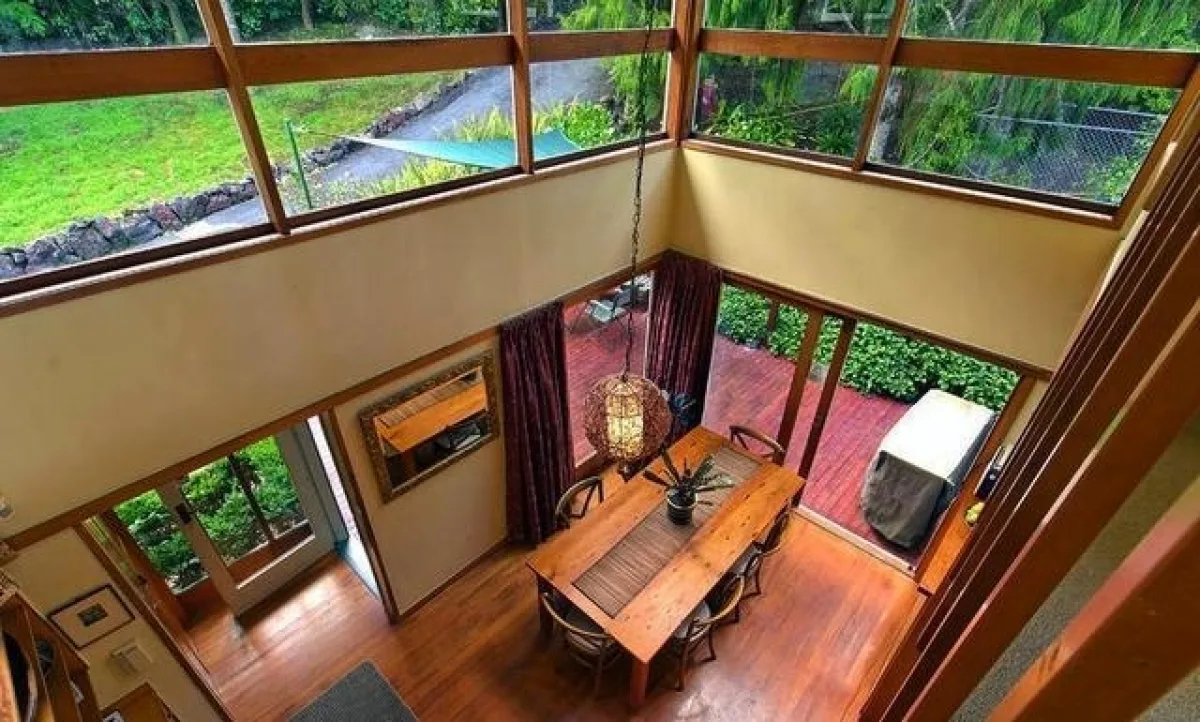Profile: Lillian Chrystall, by L.Naismith, 2005
11 Feb 2013
Lindley Naismith wrote this profile on Lillian Chrystall after interviewing her in December 2004. For more information on Lillian and Chrystall Architects, the practice she ran with husband David, refer to Lost Property. A recorded interview is also in the National Library Archives, as part of Bruce Petry's post World War 2 oral history project, 1992. (Ref: OHColl-0308) We will post a link to this on the website if possible.
Determined Not to be a Lady ~ A Profile of Lillian Chrystall
By Lindley Naismith , 2005.
Lillian credits the experience of a family voyage to Europe, a year long tour at an impressionable age immediately prior to starting Auckland Girls Grammar, with sowing the seeds of her interest in architecture.
When it came time to leave school Lillian was unimpressed with the usual options for a young lady - secretary, nurse or teacher that her parents firmly steered her towards - and determined not to be a lady, In 1944 she successfully applied for architecture school at Auckland University. That year’s intake was boosted to 36 by an influx of returned servicemen, worldly, older students in their mid to late twenties (Ivan Juriss and Bill Wilson among them) and she was one of only five women.
All the tutors were men - Lillian later became the first female member of the teaching staff. In those days male students were addressed by their surnames only and women by their surname prefaced by (usually) Miss.
During the university breaks Lillian worked for Massey Beatson Rixtrot Architects.
Having finished her degree and while working in Wellington, Lillian responded to a job advertised for studio instructors at the Auckland School of Architecture and found herself (and Tony Treadwell, who had also applied) assigned to Vernon Brown’s studio, teaching second year – the first woman on the teaching staff.
Two years later she headed overseas. At the RIBA in London, when told a potential employer was famously hard to get on with, Lillian announced in true kiwi fashion that ‘that wouldn’t be a problem for her’ and landed a job with the Hungarian Erno (omelette) Goldfinger, in whose practice she worked for two years, mostly on post-war reconstruction work, ‘bombed out schools and the like’. Wanting to learn French, so she could read Le Corbusier, she moved to Paris and was engaged in similar work for a Goldwater compatriot and friend, Andre Sive, living for a while in the ‘show home’ for one of the practice’s low cost housing projects in the suburb of Aubervilliers.
‘Show home’ being a somewhat misleading description as facilities were extremely basic by even NZ standards of the time – a single tap and basin for washing everything from potatoes to human bodies.
Lillian returned to New Zealand in her late twenties to a building boom stimulated by the end of the post war restrictions and immediately started her own practice, Lillian Laidlaw Architects. Her brother Lincoln was building his business, Lincoln Toys, and so warehouses and an office block were among her first jobs. She advertised at the School of Architecture for staff - ‘salary commensurate with ability’- and later married the successful applicant David Chrystall, forming the practice Chrystall Architects in the late 1950s.
Their little house in Airedale St, just down the road from their office in Symonds St, became a mecca for a lively clan of architects, including Bill Wilson, Ivan Juriss and the other members of the Auckland Group, as well as Peter Bartlett, who shared their office, John Goldwater, and the writer Jack Lazenby. Bill Wilson would often stay the night. A young David Mitchell, then a second year architecture student, answered their add for a baby sitter for their three kids and ended up working in their office – “the scene around their dining table was ‘a real blast”.
Chrystall Architects’ work ranged across commercial and residential including an award winning house[1] and a number of community-focussed buildings such as sheltered workshops, school buildings and kindergartens.
While the children were young the Chrystalls paid for child-care and Lillian worked form 9:00am till 3pm. Having the office close to their house meant she could duck home if required. She felt privileged to be able to get out of the house and go to work, and she is still working.
When we met in late November 2004, Lillian had two building consents to get in before Christmas and railed against the stranglehold of planners and bureaucratic process. However, her enthusiasm for her career remains untainted and she says her greatest reward is still to be found in a client’s expression of pleasure, sometimes many years later, in what she has done.
[1] Yock House, 119 Ngapuhi Road, Remuera, 1964. NZIA Bronze Medal 1967. Home & Building, May 1967, page 34.












